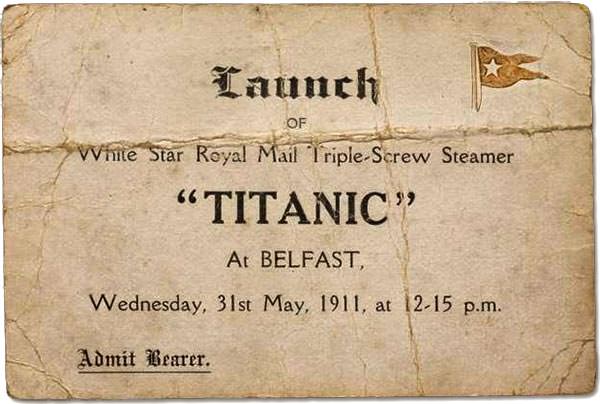Introduction
After taking a little over two years to construct, and the efforts of as many as 3,000 shipyard workers, the Titanic ship launched to great fanfare, attended by a throng of spectators and members of the world’s press. Read on for facinating facts and figures about the launch of the ship.

Above: Titanic slips into the Victoria Channel as she launches from the slipway at the Harland & Wolff shipyard.
31 May 1911 – the date on which the Titanic was launched.
Where was the Titanic launched?
Titanic was launched in Belfast, Ireland, into the Victoria Channel in Belfast Lough from a slipway at the Queen’s Yard of the Harland & Wolff shipyard
12:13 – the time at which the Titanic began her descent down the slipway, when the hydraulic launching triggers holding the ship in place were released.
90 – the number of members of the press entertained at the launch.
100,000 – the estimated size of the crowd who gathered to witness the launch of the Titanic in Belfast. Most attendees watched from whatever vantage point they could find, whilst a smaller number of dignitaries and other ticket holders spectated from a purpose-built grandstand at the Albert Quay (proceeds from the sale of tickets went to local Belfast hospitals).
Who launched the Titanic?
Robert Falconer Keith, Head Foreman Shipwright at Harland & Wolff – the man given the honour of launching her.
17 – the number of years Robert Falconer Keith had been working for Harland & Wolff at this point, originally joining in March 1894 as a carpenter.
24,360 tons – the weight of Titanic at the time of launch, much less than her eventual gross register weight of 46,328 tons, as the ship was not yet complete. Effectively just a very large hull, without engines, boilers, funnels, accommodation, furnishings and fittings. All were fitted later, in the deep water fitting-out wharf.
We just builds ’em, and shove ’em in. -an anonymous shipyard worker overheard at the launch
3 – the number of the Harland & Wolff slipway from which Titanic launched.
22 tons – the approximate amount of soap, tallow (rendered beef or mutton fat) and train-oil (sperm whale oil) used to lubricate the slipway launch ways, to facilitate a smooth launch.
Did You Know?
A shipyard worker (James Dobbins) died on the day of the launch, after being injured whilst knocking out supporting shoring timbers from the hull of the ship. He was transferred to hospital but died there from his injuries.
1 inch – the combined thickness of the soap, tallow and oil.
3-tons-per-square-inch – the amount of pressure endured by the hull of the Titanic whilst on the slipway (hence the need for all that soap and tallow!).
772 feet – the length of slipway #2 (approximately 235 metres or 257 yards).

Above: A ticket to the launch of the Titanic, given to Mr David Moneypenny, a painter employed by Harland & Wolff (In the collection of the Ulster Folk and Transport Museum).
2 – the number of rockets launched to announce the launch, one 15 minutes before launch (fired at around noon), and one at the point of launch. Other than this there was no pomp, champagne or ceremonial naming of the ship, as was the policy of the White Star Line.
62 seconds – the time it took Titanic to travel the length of the slipway and into the water.
12 knots – the estimated speed (around 14 mph) that Titanic entered the water.
80 tons – the approximate combined weight of the drag chains, attached to six huge anchors, which were used to bring Titanic to a standstill as she left the slipway.
5 – the number of tugs that eventually towed Titanic out into deep water (Hercules, a Harland & Wolff tug, with support from the tugs Alexandra, Hornby, Herculaneum and Wallasey belonging to the Alexandra Towing Company).
More To Explore
Now you know the story of the launching of Titanic, why not read all about the construction of the ship and about her fateful journey across the icy Atlantic.
